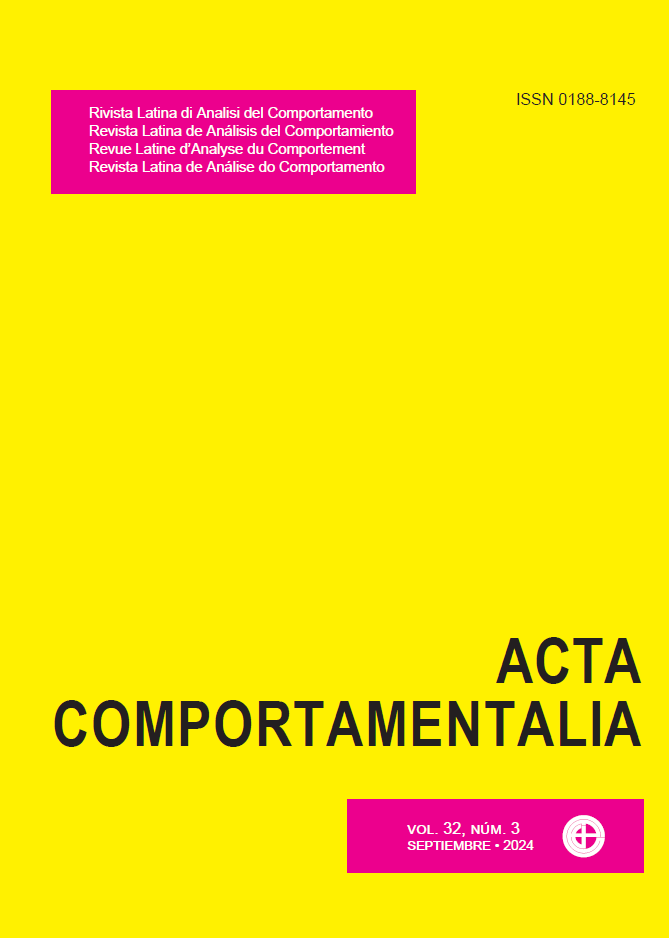Conditional Discrimination with Prompts and Emerging Behaviors in People with ASD
DOI:
https://doi.org/10.32870/ac.v32i3.88372Keywords:
discriminative control, conditional discriminations, compound stimuli, prompt, verbal relations, ASDAbstract
It is of great value to identify conditions that promote the emergence of new repertoires from the training of conditional discriminations, especially in populations with atypical development. The use of prompts has proven to be an effective tool for establishing conditional relations between arbitrary stimuli. However, it is necessary to demonstrate more comprehensively the control they exercise, whether simple or conditional. Furthermore, the training of conditional discriminations with sample and/or comparison stimuli composed of auditory and visual elements makes it possible for visual-visual, auditory-visual and auditory-auditory relations to emerge. The present study aimed to investigate the establishment of conditional discriminations through prompts that facilitate simple and conditional discrimination control, both simple and conditional, as well as the possible emergence of verbal repertoires. Four children/adolescents with autism spectrum disorder participated in the study. The stimuli used were images of painters and their names, as well as their paintings and names, in a choice procedure according to the sample. The prompts were the colors that framed the images. A Pre/Post-test design was used, with control and balance of the order of participants' exposure to the types of discriminative control, as well as the sets of stimuli (Brazilian artists and international artists) to evaluate the acquisition of arbitrary conditional relations and the emergence of verbal relations (tact and listener). Participants were first exposed to identity training with the colors that served as a frame for the visual experimental stimuli. They were then subjected to tests of visual-visual relations (conditional discriminations), visual-auditory (tact) and auditory-visual (listener). Next, they underwent training in arbitrary conditional relations with compound stimuli (image of the artist and his name/image of the artist's work and the name of the work). After exposure to training, participants underwent tact and listening post-tests. The results suggest that, even initially, the prompts had a greater effect when they favored simple discriminative control compared to conditional control. Among the participants, most, although not all, demonstrated that the colors of the frames exerted greater control over conditional responses than the paintings and photographs of their respective artists. However, it was evident that, to some degree, participants learned to relate the paintings to their respective painters. Furthermore, the fact that images of artists and their works were accompanied by their names during training led to the emergence of new repertoires: participants began to mention the names of painters and their works when confronted with their respective images (tact), just as they began to point to images of artists and their works when faced with the names of artists or their works (listener), even if they had not been directly trained to do so.
Downloads
Downloads
Published
How to Cite
Issue
Section
License

<a rel="license" href="http://creativecommons.org/licenses/by-nc-sa/4.0/"><img alt="Licencia de Creative Commons" style="border-width:0" src="https://i.creativecommons.org/l/by-nc-sa/4.0/88x31.png" /></a><br />Este obra está bajo una <a rel="license" href="http://creativecommons.org/licenses/by-nc-sa/4.0/">licencia de Creative Commons Reconocimiento-NoComercial-CompartirIgual 4.0 Internacional</a>.






